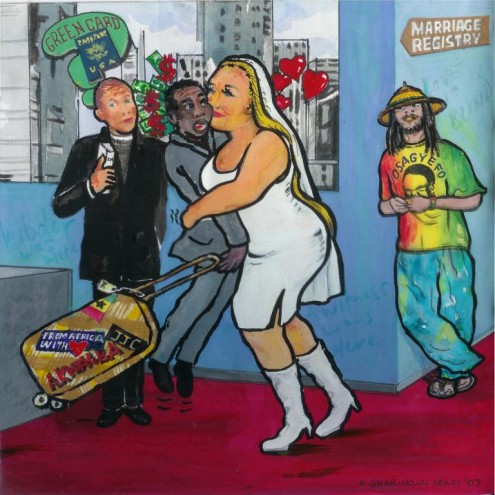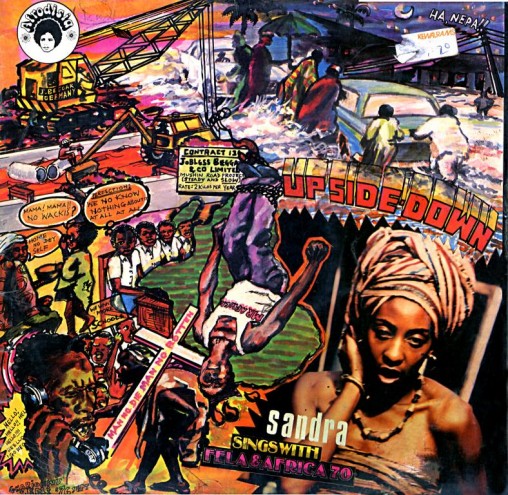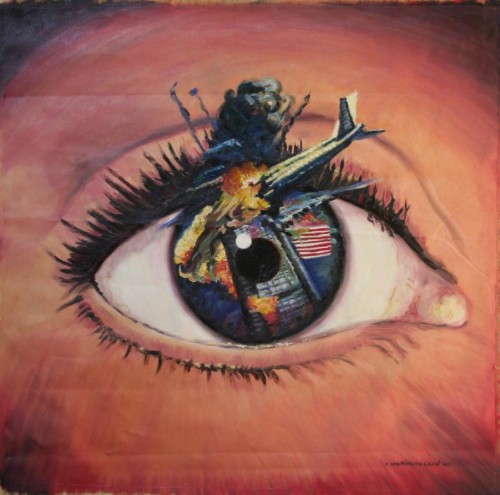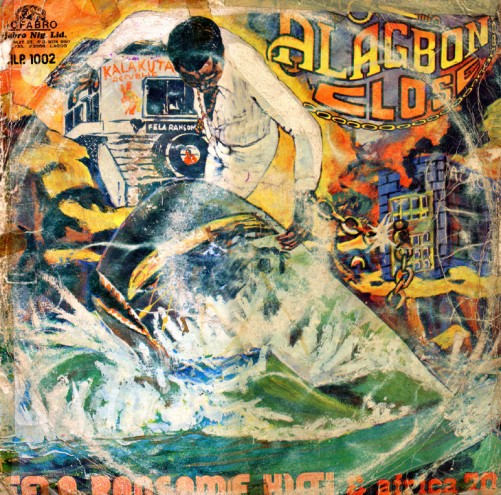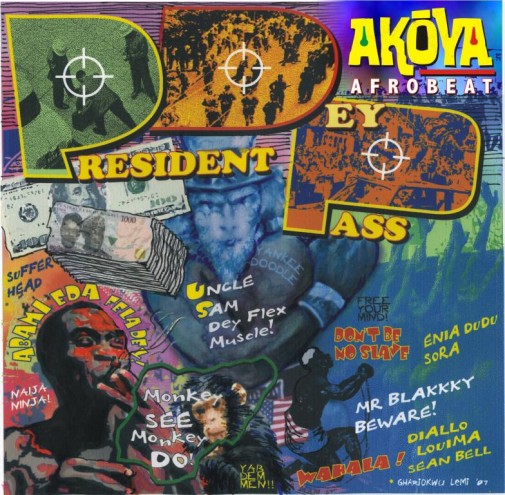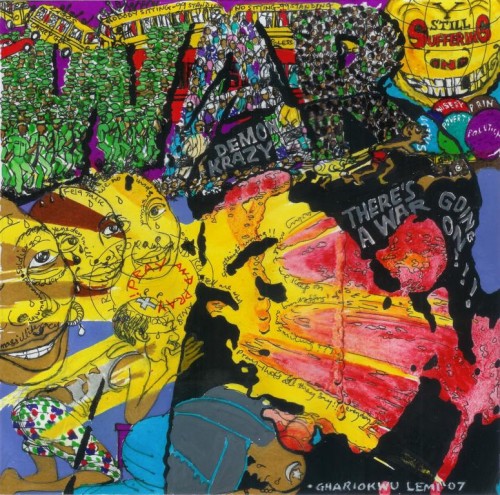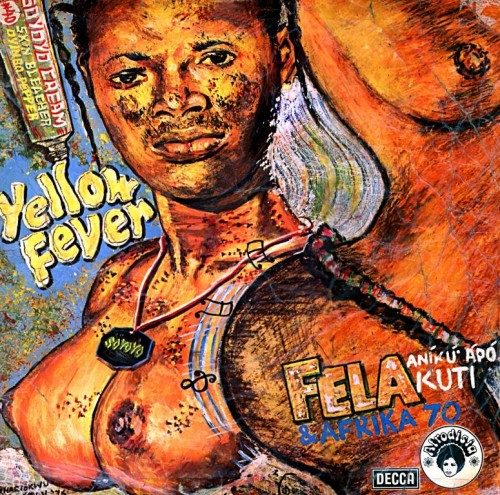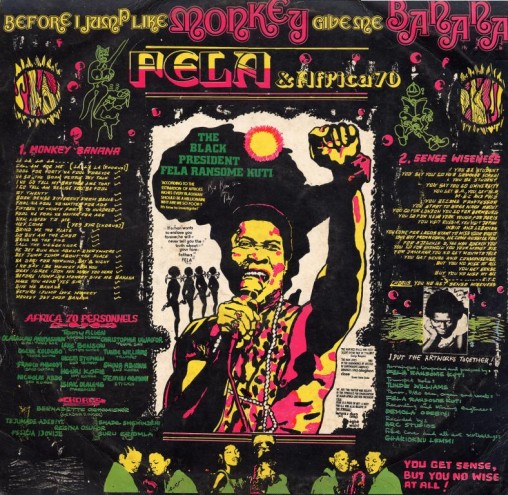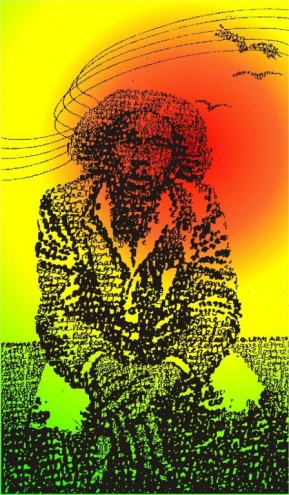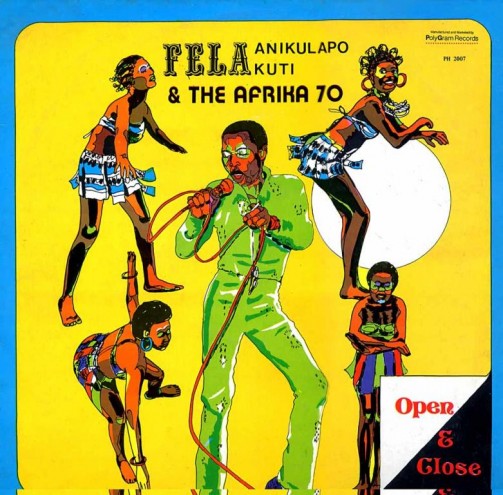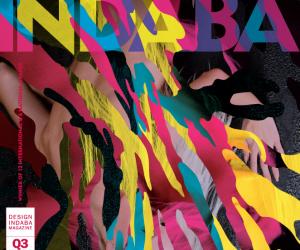First Published in
If Fela Kuti’s music is a weapon, then Ghariokwu Lemi’s designs are the cold metal barrel between the eyes. Designer of 26 album sleeves for Kuti since 1974, Lemi’s designs branded the revolutionary black president of psychedelic Afrobeat long before video killed the underground. As one of the first forms of mass distribution, the album covers were about spreading ideas rather than commercialism.
This comical, racy, political “Felasophical” style can still be seen in Lemi’s work, which reflects the repression and corruption that continues in Nigeria. With more than 2 000 album covers for the likes of Bob Marley, ET Mensah, Osita Osadebe, Gilles Peterson and Antibalas, Lemi is one of the world’s most prolific cover artists.
Design Indaba caught up with him before the launch of his Art of the Album Cover retrospective exhibition at the BASS Festival in London and Birmingham.
How did you get into album cover design?
Well, I always say that I believe in predestination, really. I got into album cover designing by accident of fate. I had done two cover designs for Peter Okoh and his Patience Rhythm Band (my uncle) earlier, but Decca West Africa didn’t have a budget to print the double sleeve design in full colour for a fledgling band, so the design was not useable. Next I did the cover design for Tessy Allan and World Affairs’s Let’s Try album on Afrodisia. That was my first cover to be published circa 1973/4. I didn’t think much of it then until I met Fela Kuti and designed the cover for Alagbon Close in November 1974. The cover got rave reviews as Fela’s music is want to do. I became a hit as a cover designer and that was enough for me to take up cover designing and pioneer it as a profession in Nigeria. Fait accompli!
How did you meet and begin to work with Fela Kuti?
Predestination again! I had done a poster of Bruce Lee’s Enter the Dragon for a beer parlour early in 1974. Babatunde Harrison was a journalist with Sunday Punch newspapers in Lagos and a regular at the drink place. On seeing my poster art, he requested a meeting. Going through my portfolio, he stumbled on my own version of Fela Kuti’s Roforofo Fight album cover design, which I had done in my practice session, part of a work regimen I follow dedicatedly as a self-taught artist. Babatunde was so enthralled with my Fela cover that he promptly assigned me to do a Fela portrait as a test. Upon passing his test in flying colours, he introduced me to Fela Kuti. Not long after, I was offered the golden opportunity to design Alagbon Close and so started the relationship between Fela Kuti and my humble self.
What do you remember about Kalakuta Republic?
My main nostalgia is the unhindered freedom and self expressiveness of youth. One can never get that back in this life again!
Your cover for Fela Kuti’s Yellow Fever has become particularly iconic, why?
My cover art for Fela Kuti’s Yellow Fever is particularly significant because it spoke and still speaks in very graphic terms against the bleaching of skin by Africans. Some 33 years on, Fela Kuti’s music and message still resonates as an axiom. My accompanying art still serves as a megaphone today for those who will care to listen, look, learn and reason.
After designing more than 26 covers for Fela Kuti, he rejected one of your album covers in 1978 and you broke off your relationship. How did that happen?
Oh my goodness, that was one fractious moment I have relived over and over again in my subconscious. I made up with Fela in 1986 and with the benefit of hindsight, I smile over it all now as the said artwork ended up as the book cover for Fela: From West Africa to West Broadway by Trevor Schoonmaker in 2003 – a whole 25 years after! I’m reserving the details for my memoirs when the time comes.
Another one of your particularly iconic works is Bob Marley’s Talking Blues album cover. It also seems to be quite different to the rest of your work?
You are right to a certain degree. My Bob Marley’s Talking Blues album cover was a remix because it was a reissue by Polygram Records in Nigeria. To me it’s no big deal really. It is not an original Lemi. Like I said, it was a remix from the original imported album. I love the Marley picture and recreated it by drawing and hand painting it. I was Polygram Records’s consulting album cover designer from early 1980s to early 1990s. I designed over 200 sleeves for that multinational company in Nigeria then. I did the covers of many notable international artists like Aswad, Lucky Dube, Miriam Makeba, Tabu Ley, Mbilia Bel etc. Since Marley is such a big name, I can understand why that work is seen as iconic but I have my reservations. The Marley art I created for his obituary published by CBS Records in Nigeria in 1981 is more like it for me. It is a classic piece. I wish to show it to you, so you can begin to talk about iconic matters, cos that is original Lemi 1 000%!
You are quite proud of your work being described as “Lagos art”. How would you describe “Lagos art”?
I was born, bred and buttered in Lagos so I live and breathe Lagos. Being a self-taught artist, I was not to be classified with the institutional artists who belong to various schools of art in Nigeria. My art worked to brand Fela Kuti’s Afrobeat music, which is Lagos-bred. A professor from University of Ibadan, Sola Olorunyomi, branded my art as “Lagos art” and I proudly welcomed the development. With all its craziness, I love my Lagos to boot! On the global scene, my art is actually classified as Afro pop art and that is the theme of my next exhibition in Lagos in July. You can thereby call me the Lagos Afro pop art exponent!
Over the years, your style has moved more and more into collage and political cartooning. What is the link between culture and politics?
Culture is the essence of our lives and politics is the diversification of our various cultures. The way we eat, share, arrange and do things socially and otherwise. The way we interact and relate to our fellow beings so that we may move forward in this life in this hemisphere. Our culture and politics must relate side by side so we can leave the world a better place than we met it. So my art has a strong role to play in this movement of culture and politics. It is an everyday movement of people and policy without letting. It is forever and a day.
What is the current social climate in Nigeria? How do you continue to communicate it in your work?
The current social climate in Nigeria is more corrupt and decadent than it was 35 years ago when my art started. I have continued my mono-dialogue in my works through my life’s experiences. That is by being bold when I can and stuttering when I deem fit. But definitely, my life and my art must go on. I’m never gonna give it up for anything in this whole wide world called life.
Peter Saville has talked about the album cover being one of the first ways to communicate counterculture across the globe. What is the significance of the album cover to you?
I totally agree with what Peter Saville said. The significance of album cover art to me is that it’s one of the greatest marketing tools to sell the product of music, the message and, especially, the accompanying ideology. That is the crunch for me. It is the allure of my stock in trade. Period.
Punch Records has come into possession of the Lemi Ghariokwu archive. CEO Ammo Talwar is inviting scholars to study the archive and contribute to the knowledge and understanding around the art, culture and politics represented within this significant body of work. More info: www.punchrecords.co.uk.

